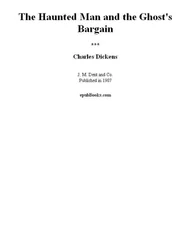Charles Darwin - The Descent of Man, and Selection in Relation to Sex
Здесь есть возможность читать онлайн «Charles Darwin - The Descent of Man, and Selection in Relation to Sex» — ознакомительный отрывок электронной книги совершенно бесплатно, а после прочтения отрывка купить полную версию. В некоторых случаях можно слушать аудио, скачать через торрент в формате fb2 и присутствует краткое содержание. Жанр: foreign_antique, foreign_prose, на английском языке. Описание произведения, (предисловие) а так же отзывы посетителей доступны на портале библиотеки ЛибКат.
- Название:The Descent of Man, and Selection in Relation to Sex
- Автор:
- Жанр:
- Год:неизвестен
- ISBN:нет данных
- Рейтинг книги:5 / 5. Голосов: 1
-
Избранное:Добавить в избранное
- Отзывы:
-
Ваша оценка:
- 100
- 1
- 2
- 3
- 4
- 5
The Descent of Man, and Selection in Relation to Sex: краткое содержание, описание и аннотация
Предлагаем к чтению аннотацию, описание, краткое содержание или предисловие (зависит от того, что написал сам автор книги «The Descent of Man, and Selection in Relation to Sex»). Если вы не нашли необходимую информацию о книге — напишите в комментариях, мы постараемся отыскать её.
The Descent of Man, and Selection in Relation to Sex — читать онлайн ознакомительный отрывок
Ниже представлен текст книги, разбитый по страницам. Система сохранения места последней прочитанной страницы, позволяет с удобством читать онлайн бесплатно книгу «The Descent of Man, and Selection in Relation to Sex», без необходимости каждый раз заново искать на чём Вы остановились. Поставьте закладку, и сможете в любой момент перейти на страницу, на которой закончили чтение.
Интервал:
Закладка:
Although the intellectual powers and social habits of man are of paramount importance to him, we must not underrate the importance of his bodily structure, to which subject the remainder of this chapter will be devoted; the development of the intellectual and social or moral faculties being discussed in a later chapter.
Even to hammer with precision is no easy matter, as every one who has tried to learn carpentry will admit. To throw a stone with as true an aim as a Fuegian in defending himself, or in killing birds, requires the most consummate perfection in the correlated action of the muscles of the hand, arm, and shoulder, and, further, a fine sense of touch. In throwing a stone or spear, and in many other actions, a man must stand firmly on his feet; and this again demands the perfect co-adaptation of numerous muscles. To chip a flint into the rudest tool, or to form a barbed spear or hook from a bone, demands the use of a perfect hand; for, as a most capable judge, Mr. Schoolcraft (68. Quoted by Mr. Lawson Tait in his 'Law of Natural Selection,' 'Dublin Quarterly Journal of Medical Science,' Feb. 1869. Dr. Keller is likewise quoted to the same effect.), remarks, the shaping fragments of stone into knives, lances, or arrow-heads, shews "extraordinary ability and long practice." This is to a great extent proved by the fact that primeval men practised a division of labour; each man did not manufacture his own flint tools or rude pottery, but certain individuals appear to have devoted themselves to such work, no doubt receiving in exchange the produce of the chase. Archaeologists are convinced that an enormous interval of time elapsed before our ancestors thought of grinding chipped flints into smooth tools. One can hardly doubt, that a man-like animal who possessed a hand and arm sufficiently perfect to throw a stone with precision, or to form a flint into a rude tool, could, with sufficient practice, as far as mechanical skill alone is concerned, make almost anything which a civilised man can make. The structure of the hand in this respect may be compared with that of the vocal organs, which in the apes are used for uttering various signal-cries, or, as in one genus, musical cadences; but in man the closely similar vocal organs have become adapted through the inherited effects of use for the utterance of articulate language.
Turning now to the nearest allies of men, and therefore to the best representatives of our early progenitors, we find that the hands of the Quadrumana are constructed on the same general pattern as our own, but are far less perfectly adapted for diversified uses. Their hands do not serve for locomotion so well as the feet of a dog; as may be seen in such monkeys as the chimpanzee and orang, which walk on the outer margins of the palms, or on the knuckles. (69. Owen, 'Anatomy of Vertebrates,' vol. iii. p. 71.) Their hands, however, are admirably adapted for climbing trees. Monkeys seize thin branches or ropes, with the thumb on one side and the fingers and palm on the other, in the same manner as we do. They can thus also lift rather large objects, such as the neck of a bottle, to their mouths. Baboons turn over stones, and scratch up roots with their hands. They seize nuts, insects, or other small objects with the thumb in opposition to the fingers, and no doubt they thus extract eggs and young from the nests of birds. American monkeys beat the wild oranges on the branches until the rind is cracked, and then tear it off with the fingers of the two hands. In a wild state they break open hard fruits with stones. Other monkeys open mussel-shells with the two thumbs. With their fingers they pull out thorns and burs, and hunt for each other's parasites. They roll down stones, or throw them at their enemies: nevertheless, they are clumsy in these various actions, and, as I have myself seen, are quite unable to throw a stone with precision.
It seems to me far from true that because "objects are grasped clumsily" by monkeys, "a much less specialised organ of prehension" would have served them (70. 'Quarterly Review,' April 1869, p. 392.) equally well with their present hands. On the contrary, I see no reason to doubt that more perfectly constructed hands would have been an advantage to them, provided that they were not thus rendered less fitted for climbing trees. We may suspect that a hand as perfect as that of man would have been disadvantageous for climbing; for the most arboreal monkeys in the world, namely, Ateles in America, Colobus in Africa, and Hylobates in Asia, are either thumbless, or their toes partially cohere, so that their limbs are converted into mere grasping hooks. (71. In Hylobates syndactylus, as the name expresses, two of the toes regularly cohere; and this, as Mr. Blyth informs me, is occasionally the case with the toes of H. agilis, lar, and leuciscus. Colobus is strictly arboreal and extraordinarily active (Brehm, 'Thierleben,' B. i. s. 50), but whether a better climber than the species of the allied genera, I do not know. It deserves notice that the feet of the sloths, the most arboreal animals in the world, are wonderfully hook-like.
As soon as some ancient member in the great series of the Primates came to be less arboreal, owing to a change in its manner of procuring subsistence, or to some change in the surrounding conditions, its habitual manner of progression would have been modified: and thus it would have been rendered more strictly quadrupedal or bipedal. Baboons frequent hilly and rocky districts, and only from necessity climb high trees (72. Brehm, 'Thierleben,' B. i. s. 80.); and they have acquired almost the gait of a dog. Man alone has become a biped; and we can, I think, partly see how he has come to assume his erect attitude, which forms one of his most conspicuous characters. Man could not have attained his present dominant position in the world without the use of his hands, which are so admirably adapted to act in obedience to his will. Sir C. Bell (73. 'The Hand,' etc., 'Bridgewater Treatise,' 1833, p. 38.) insists that "the hand supplies all instruments, and by its correspondence with the intellect gives him universal dominion." But the hands and arms could hardly have become perfect enough to have manufactured weapons, or to have hurled stones and spears with a true aim, as long as they were habitually used for locomotion and for supporting the whole weight of the body, or, as before remarked, so long as they were especially fitted for climbing trees. Such rough treatment would also have blunted the sense of touch, on which their delicate use largely depends. From these causes alone it would have been an advantage to man to become a biped; but for many actions it is indispensable that the arms and whole upper part of the body should be free; and he must for this end stand firmly on his feet. To gain this great advantage, the feet have been rendered flat; and the great toe has been peculiarly modified, though this has entailed the almost complete loss of its power of prehension. It accords with the principle of the division of physiological labour, prevailing throughout the animal kingdom, that as the hands became perfected for prehension, the feet should have become perfected for support and locomotion. With some savages, however, the foot has not altogether lost its prehensile power, as shewn by their manner of climbing trees, and of using them in other ways. (74. Haeckel has an excellent discussion on the steps by which man became a biped: 'Natürliche Schöpfungsgeschichte,' 1868, s. 507. Dr. Buchner ('Conférences sur la Théorie Darwinienne,' 1869, p. 135) has given good cases of the use of the foot as a prehensile organ by man; and has also written on the manner of progression of the higher apes, to which I allude in the following paragraph: see also Owen ('Anatomy of Vertebrates,' vol. iii. p. 71) on this latter subject.)
If it be an advantage to man to stand firmly on his feet and to have his hands and arms free, of which, from his pre-eminent success in the battle of life there can be no doubt, then I can see no reason why it should not have been advantageous to the progenitors of man to have become more and more erect or bipedal. They would thus have been better able to defend themselves with stones or clubs, to attack their prey, or otherwise to obtain food. The best built individuals would in the long run have succeeded best, and have survived in larger numbers. If the gorilla and a few allied forms had become extinct, it might have been argued, with great force and apparent truth, that an animal could not have been gradually converted from a quadruped into a biped, as all the individuals in an intermediate condition would have been miserably ill-fitted for progression. But we know (and this is well worthy of reflection) that the anthropomorphous apes are now actually in an intermediate condition; and no one doubts that they are on the whole well adapted for their conditions of life. Thus the gorilla runs with a sidelong shambling gait, but more commonly progresses by resting on its bent hands. The long-armed apes occasionally use their arms like crutches, swinging their bodies forward between them, and some kinds of Hylobates, without having been taught, can walk or run upright with tolerable quickness; yet they move awkwardly, and much less securely than man. We see, in short, in existing monkeys a manner of progression intermediate between that of a quadruped and a biped; but, as an unprejudiced judge (75. Prof. Broca, La Constitution des Vertèbres caudales; 'La Revue d'Anthropologie,' 1872, p. 26, (separate copy).) insists, the anthropomorphous apes approach in structure more nearly to the bipedal than to the quadrupedal type.
Читать дальшеИнтервал:
Закладка:
Похожие книги на «The Descent of Man, and Selection in Relation to Sex»
Представляем Вашему вниманию похожие книги на «The Descent of Man, and Selection in Relation to Sex» списком для выбора. Мы отобрали схожую по названию и смыслу литературу в надежде предоставить читателям больше вариантов отыскать новые, интересные, ещё непрочитанные произведения.
Обсуждение, отзывы о книге «The Descent of Man, and Selection in Relation to Sex» и просто собственные мнения читателей. Оставьте ваши комментарии, напишите, что Вы думаете о произведении, его смысле или главных героях. Укажите что конкретно понравилось, а что нет, и почему Вы так считаете.












